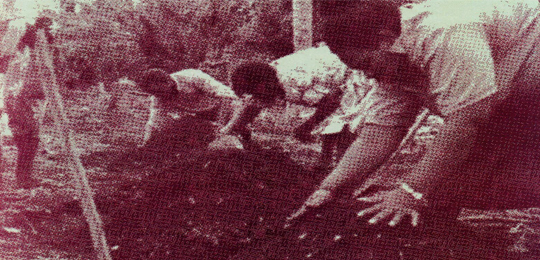June 2019
Building Towards Resilience and Productivity

Agroforestry is an intensive land-use management system where trees are grown amongst crops
In 2015 eighty percent of Vanuatu’s land mass was completely destroyed by Cyclone Pam, crops and homes gone in the wink of an eye.
Project Manager of Live & Learn Vanuatu, Jessie Kampai says approximately 70% of the 280 000 population live in rural communities and most are subsistence farmers who depend entirely upon their farms for food and in which they sell their surplus produce as a source of income.
‘Cyclone Pam hit the islands in 2015 and badly damaged 80% of the country. Southern Vanuatu in particular was totally devastated by the cyclone which swept away gardens, trees and houses. In improving food security, Agroforestry was identified as the best approach going forward,’ she said.
Reared in nurseries, seedlings replaced crops that were washed away in the disaster. The implementation of agroforestry plots, plant tissue grafting, and the introduction of carrots and broccoli across the eighty-two islands of Vanuatu are being hailed as important steps forward in the fight to end food security.
Agroforestry is an intensive land-use management system whereby trees are grown amongst crops or in pastureland. Small islands like Vanuatu as Jessie Kampai says, find this technique very useful. ‘Individuals can grow trees, vegetables and root crops such as mahogany, carrots and sweet potato, all on the same piece of land and still earn the income as they would from two separate plots of land,’ she said.
She explained the ideology behind the agroforestry approach was not just to improve food security, but also to create long-term income opportunities for farmers.
‘Trees such as mahogany, sandalwood and whitewood were grown as well as cassava, taro and yam which were reared at the nurseries. We also planted vegetables such as pak choi, carrots and dwarf beans,’ she said.
Seven priority communities – Finonge in Emae, Pele in Tongoa, Paunangisu in Efate, Middle Bush community in Tanna, Port Patrick community in Aneityum and Ipota community in Erromango – were chosen to participate in this project. Across these communities in the provinces of Shefa and Tafea, men, women, youth and chiefs were elected to make up the knowledge hub committees and oversee the day-to-day operations of the nurseries. The committees also accepted material, social and financial support from Live & Learn and the government, which they disseminated to the community members.
Jessie Kampai says the committees oversaw the day-to-day operations of the nurseries until the seedlings were old enough for distribution, ‘In total, 50 325 trays of vegetable seedlings and 30 252 trays of tree seedlings were distributed across the seven priority areas and a total of 10 000 individuals benefited from the project.’
With the nurseries effectively up and running in all priority areas, a demonstration plot was established at each one, where communities were taken to the demonstration plots and given first-hand training on the different spacing and plant varieties that were integrated into the plot.
Integrated into the training was a technique called grafting, a horticulture method whereby the tissues of one plant are joined to the roots of another, at the stem. Participants in the project were shown how to graft wild lemon tree variety’s roots to the introduced lemon tree variety’s stem to create a more cyclone-resistant plant.
‘I am so happy to be part of the training and especially the grafting session, I had wanted to learn it long ago but there was no training available. This is a bonus for us farmers, to learn and apply this skill to my farm. It will help save my farm in times of disaster,’ said John Willie, a participant in the project.
Jessie Kampai says the project taken by the project proved that agroforestry is a viable technique for small island nations like Vanuatu to improve food security in that it allows those with limited resources to grow their own food and, in the future, building materials.
